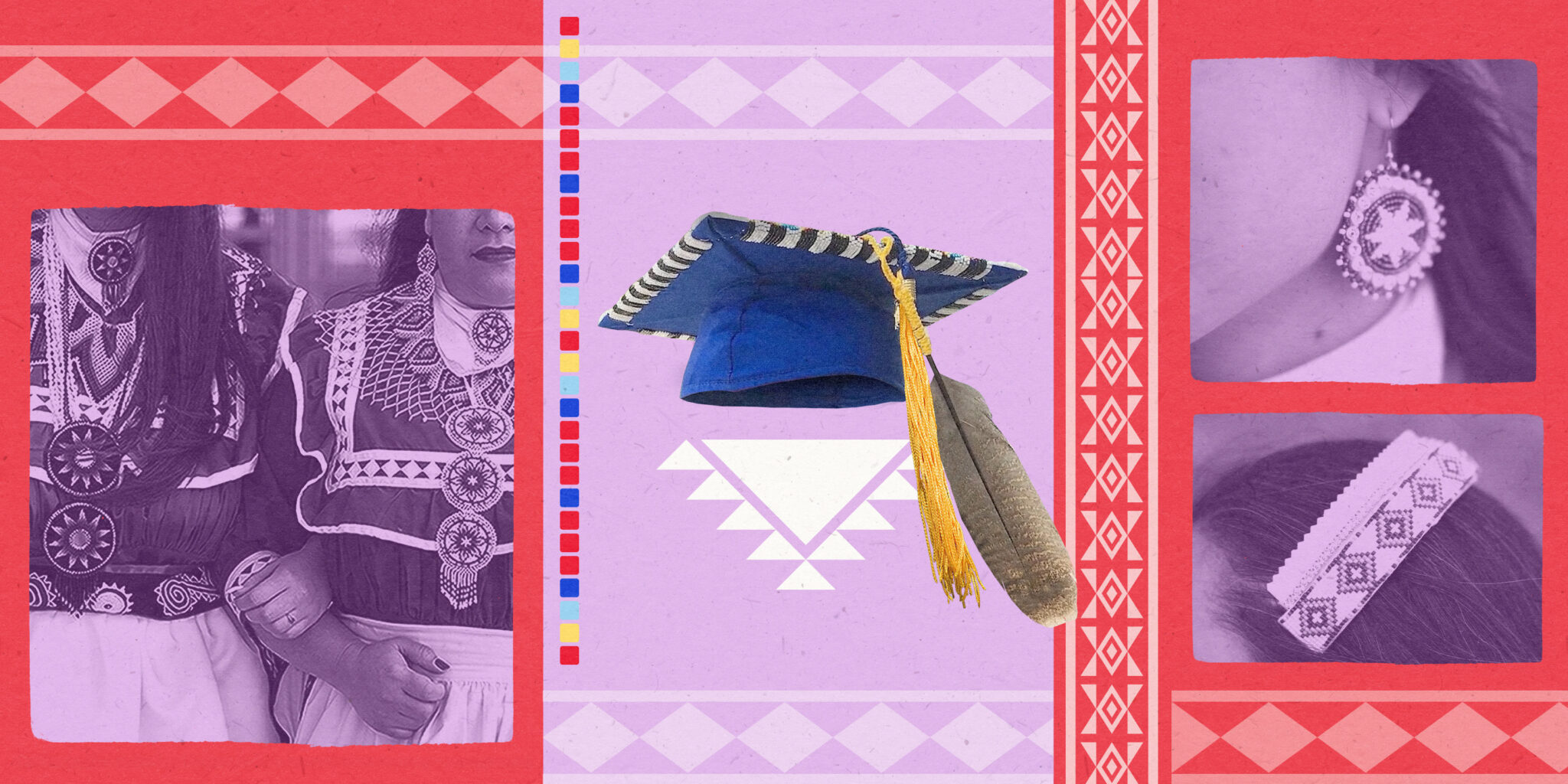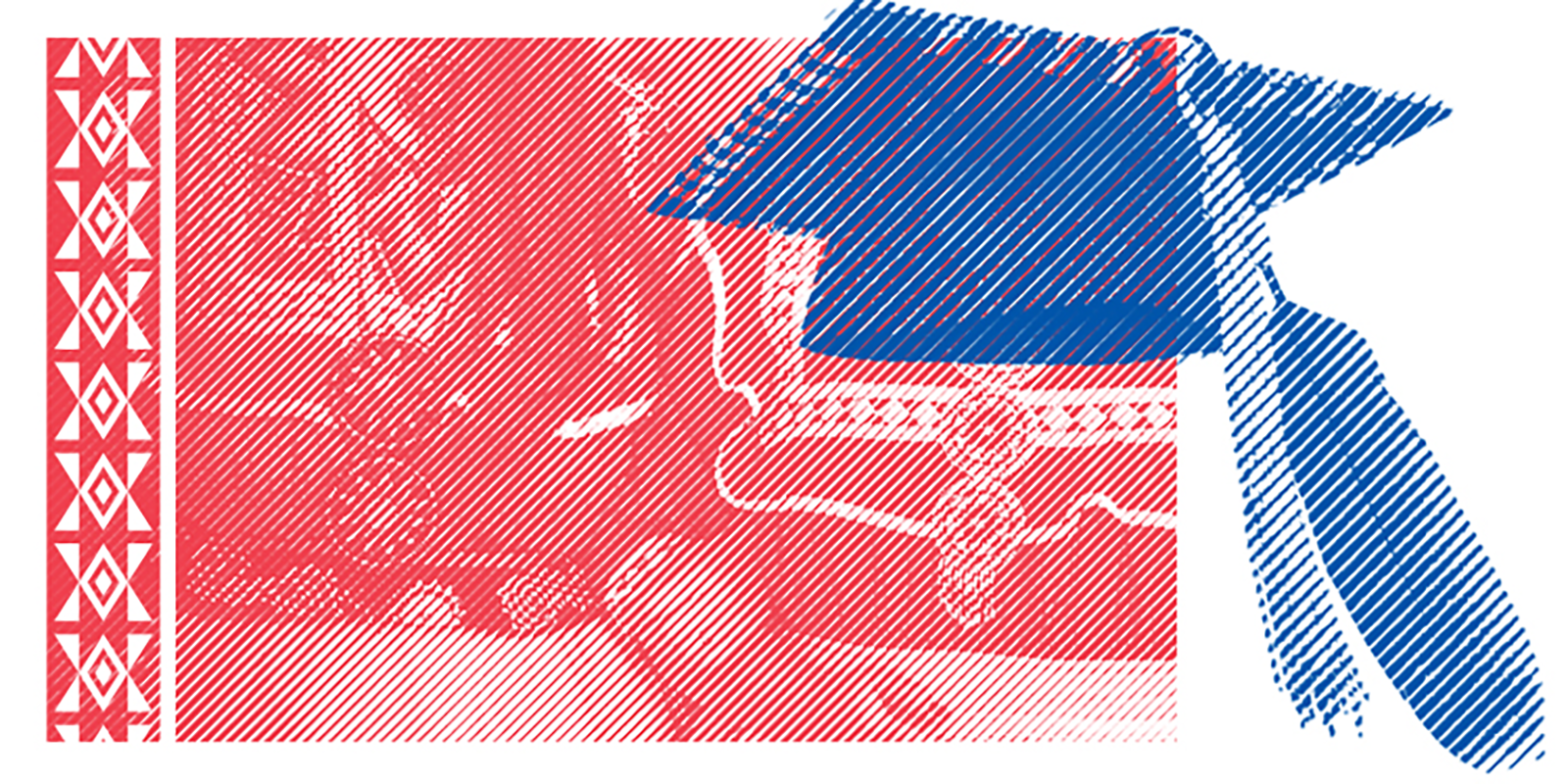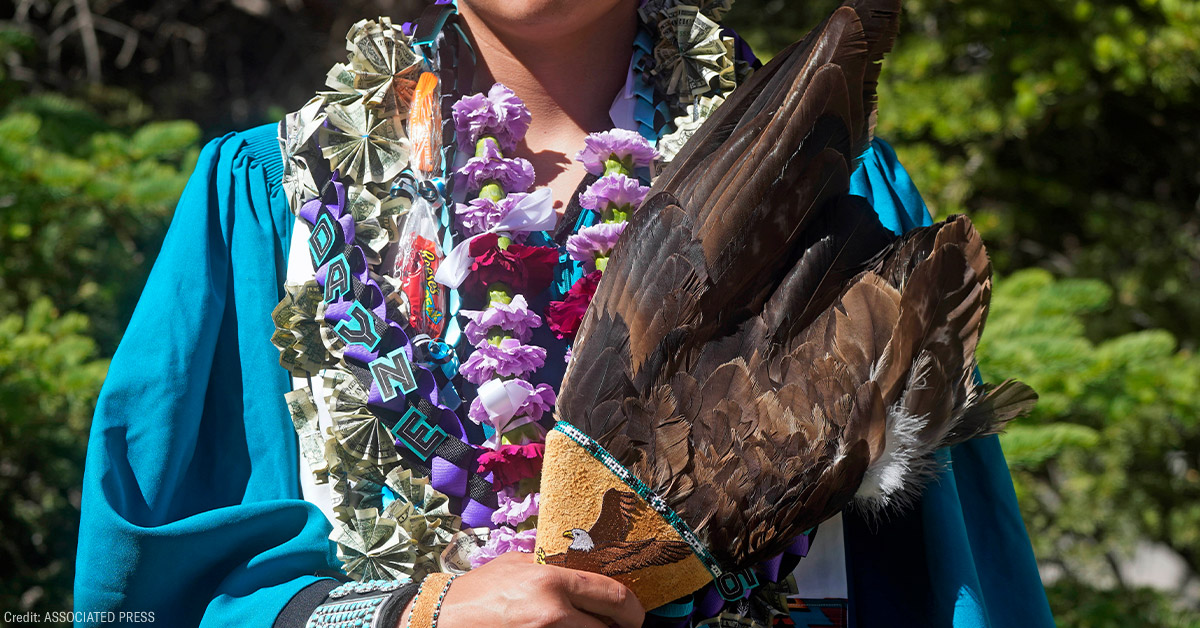Graduation is a time of celebration and community. After centuries of attempted genocide and erasure of Indigenous culture and tradition, the ability to celebrate commencement in a culturally appropriate way is deeply important for Indigenous students. Tribal regalia worn at commencement are a symbol of resistance, resilience, and reclamation by students of their right to an education that honors their culture and heritage. But for some Indigenous students, graduation can be fraught with uncertainty or controversy over their ability to wear tribal regalia during commencement ceremonies. Some schools still prohibit Indigenous students from wearing items at graduation, claiming that it would violate the school’s dress code and speculating, without any basis, that it would disrupt the ceremony.
Indigenous Students on Why Wearing Their Tribal Regalia at Graduation is Important
Whether an eagle feather or plume, beadwork, sealskin cap, moccasins, or other forms of traditional dress, tribal regalia plays a unique role, spiritually and culturally, for graduating Indigenous students. Policies that strip Indigenous students of their cultural and religious heritage in the name of assimilation only compound the violence and oppression that these students and their communities have suffered. As a result, Indigenous students face disproportionate outcomes across a range of educational statistics, including higher rates of exclusionary discipline and lower graduation rates. Due to the history of abuse of Indigenous students in schools, the government has a special obligation to address ongoing deprivations of Indigenous students’ educational and expressive rights.
Graduation is a time of celebration and community. After centuries of attempted genocide and erasure of Indigenous culture and tradition, the ability to celebrate commencement in a culturally appropriate way is deeply important for Indigenous students. Tribal regalia worn at commencement are a symbol of resistance, resilience, and reclamation by students of their right to an education that honors their culture and heritage. But for some Indigenous students, graduation can be fraught with uncertainty or controversy over their ability to wear tribal regalia during commencement ceremonies. Some schools still prohibit Indigenous students from wearing items at graduation, claiming that it would violate the school’s dress code and speculating, without any basis, that it would disrupt the ceremony.
Indigenous Students on Why Wearing Their Tribal Regalia at Graduation is Important
Whether an eagle feather or plume, beadwork, sealskin cap, moccasins, or other forms of traditional dress, tribal regalia plays a unique role, spiritually and culturally, for graduating Indigenous students. Policies that strip Indigenous students of their cultural and religious heritage in the name of assimilation only compound the violence and oppression that these students and their communities have suffered. As a result, Indigenous students face disproportionate outcomes across a range of educational statistics, including higher rates of exclusionary discipline and lower graduation rates. Due to the history of abuse of Indigenous students in schools, the government has a special obligation to address ongoing deprivations of Indigenous students’ educational and expressive rights.




